It’s not exactly dinner party conversation, but cremains is an interesting topic.
So what do you know about cremains?
Well firstly, it comes from the two words “cremated” +”remains”.
If you’re still interested, this guide will go through some other interesting things about cremains.
We’ll discuss things like what they look like, how much you receive after cremation, and what to do with them.
What Are Cremains?
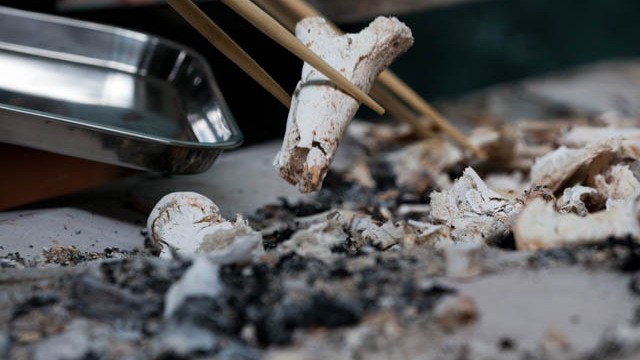
The word is actually a portmanteau, combining the words “cremated and remains”.
It can also be commonly called ashes and remains.
It is the bone matter that remains after the organic material is incinerated.
How much ash is there after cremation?
The average weight of remains is approximately five pounds.
What is left after the cremation process are only bone fragments. Therefore, a tall person leaves more remains than a short one.
Men generally have denser bones than women. In addition, young people commonly have denser bones than older people.
So younger male’s ashes will weigh more than elderly women.
Furthermore, adult ashes represent roughly 3.5% of the original weight and 2.5% for children.
What do cremated remains look like?
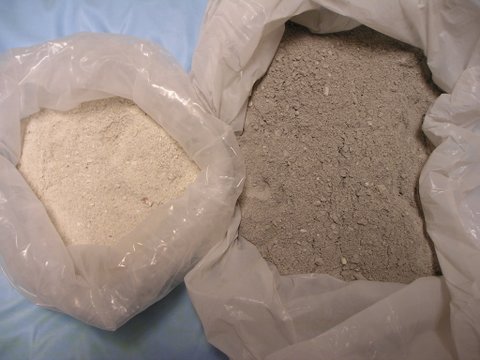
Human cremains
They typically have a relatively uniform, but coarse texture.
The color is normally a pasty white, but can be gray at times. As mentioned, they average around five pounds for an adult.
What are human ashes made up of?
The word “ashes” is typically used instead of “cremains”. But contrary to common belief, cremains are not ashes at all.
For the most part, they are dry calcium phosphates together with some other minerals, including potassium and sodium, which in simpler terms means bone matter.
While pet cremation is also a popular option, you maybe interested to know that their remains is almost the same as human ashes.
Can you bury ashes in a cemetery plot?
Yes, you can. This is referred to as interment of ashes.
It is the same burial process as you would with a body, except of course, cremation plots are much smaller.
In many cases, cemeteries allow more than one body to be buried in a single plot, making it more economically feasible as well.
Some cemeteries and sections are strictly intended for cremation burials.
If there is not one in your area, most traditional cemeteries have a designated area and some have burial gardens for interring ashes.
How much does it cost to bury an urn?
It costs around $600 to bury cremated remains in an urn plot. As opposed to about $1,100+ for a traditional burial plot.
These cremation prices usually cover the cost of opening the ground for the burial and then backfilling the grave after placement of the body or urn.
For those looking for a cheap cremation option, a direct cremation is the most simple and affordable option.
What is water cremation?
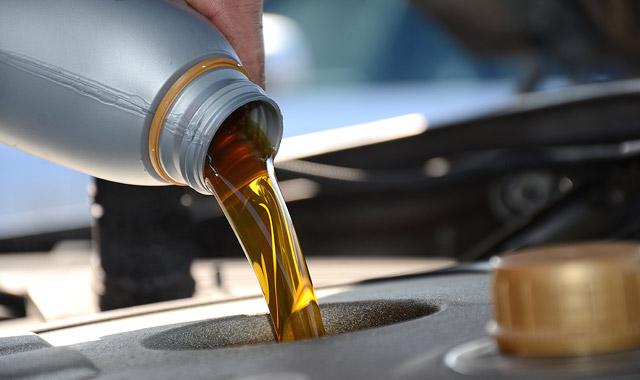
Water cremation remains
Cremation is actually possible without using a flame.
Also know as alkaline hydrolysis or resomation, a water based cremation is proven to be much more eco friendly and sustainable.
It mimics the decomposition process of when someone is buried underground, using a combination of water and potassium hydroxide.
The Cremation Process
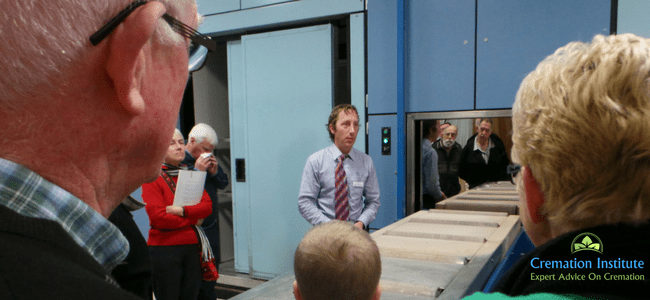
Crematories utilize high-powered furnaces known as cremators that are fueled by either propane or gas, generating a heat that reaches an average of 1800° F.
The heat in the chamber, also known as the retort, normally maintains the intense temperatures due to the thick and heat-resistant insulation of refractory bricks.
Most modern cremators are operated by digital controls.
Typically, there is also someone present who monitors the process to ensure there are no heat fluctuations that would interfere with the cremation.
The cremation casket
In most cases, the body is positioned inside a container such as a cremation casket or a wooden or cardboard box, which are specially made to burn quickly and leave very little residual material.
When the appropriate temperature is attained, the body is placed into the chamber for around two hours, more or less depending on the size of the body.
After the cremation
The remaining bone fragments are allowed to cool for approximately 30 minutes. They are then run through a magnetic field or scanned manually with a magnet.
This is to extract any remaining metal, such as casket handles, tooth fillings, or surgical implants.
Pacemakers must be removed in advance of the cremation due to the possibility of explosion.
The final process
The bone fragments ground down into the gritty sand-like substance. Those are placed into a container and presented or sent to the family.
More information about the cremation process
If you’re interested about the whole procedure, have a read of our cremation process article.
What to Do with Cremains?
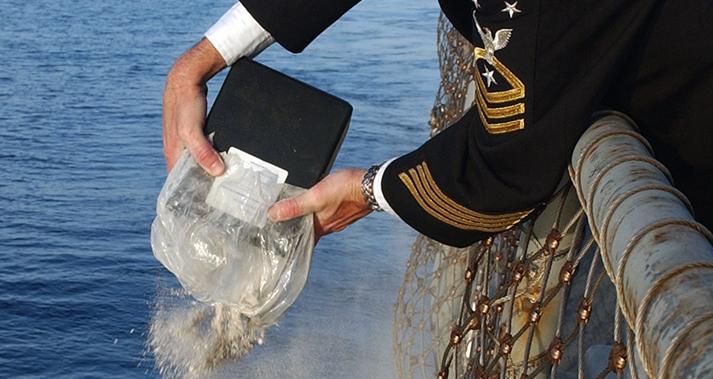
There are countless options, below are just a few ideas for ashes. If you’re interested in a full list, we’ve created an article dedicated to what to do with cremains.
A Columbarium
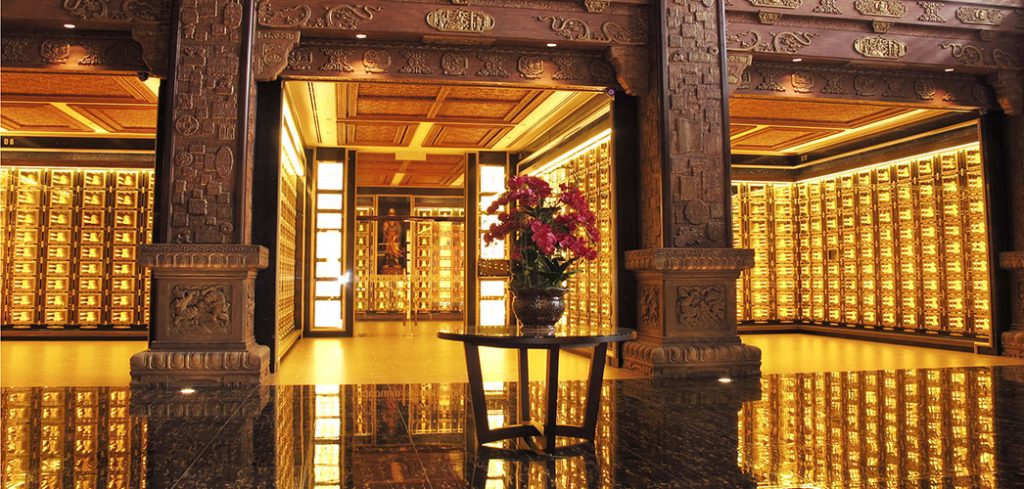
Nirvana Memorial Garden Columbarium
It’s basically an above ground mausoleum for ashes.
They are frequently free standing wall structures that have niches for placement of the urn or other container.
You can usually find them at cemeteries, funeral homes, and churches.
Sometimes a columbarium can also contain more than one container or some small possessions of the deceased.
This is another method that provides a location for family and friends to visit their loved one.
Scattering Ashes
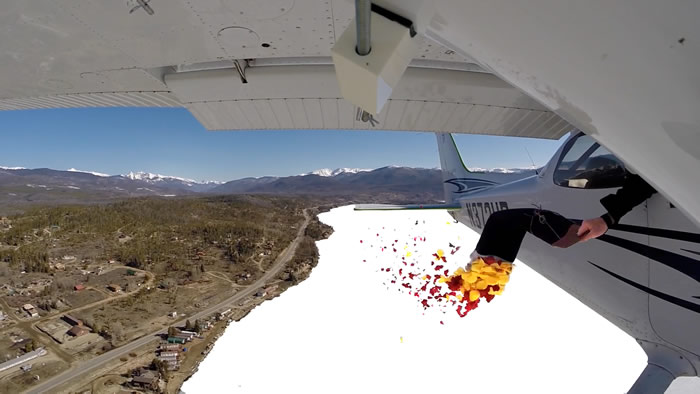
Scattering From A Plane
This preferred by about half of the people who choose cremation.
There are any number of locations to scatter ashes. Frequently, it’s a place that was special to the person who passed, which we’ll discuss further below.
They’re might be religious restrictions on scattering, for example Catholics prohibit ashes scattering.
Displaying the Ashes
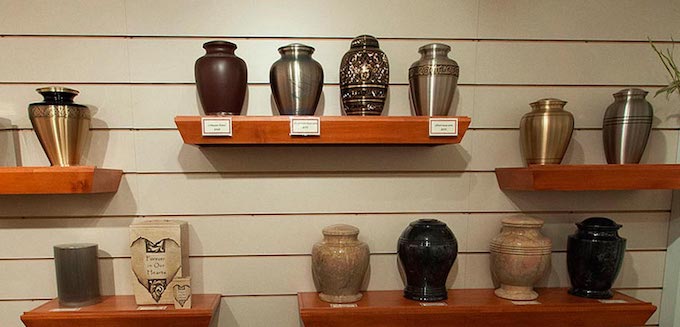
Displaying the ashes in a cremation urn is also a very popular method.
There are unlimited containers in which to choose for the displaying.
Types of cremation urns
They can be common ones made of marble or brass. You can choose a biodegradable urn or tree urn, which are environmentally friendly options.
For couples, companion urns allow for the ashes of both people.
If you have unfortunately lost a child early, you may want a baby urn.
You may have noticed one of these before sitting on someone’s mantel.
Turn into Jewelry
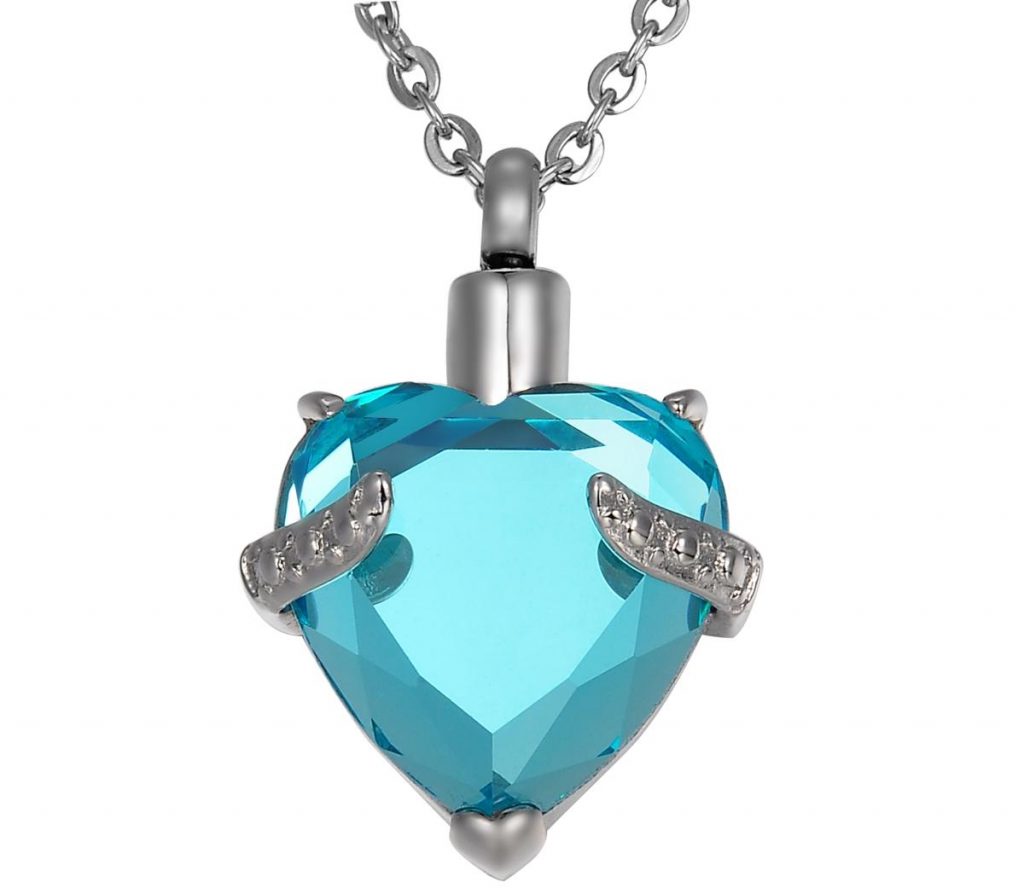
Stunning jewelry can even be made from a small amount of the ashes.
You can turn the memorial into necklaces, bracelets, rings, and other designs.
They are either mixed into the materials used to make the jewelry or they can be inserted into it (called Keepsakes).
Cremation Art
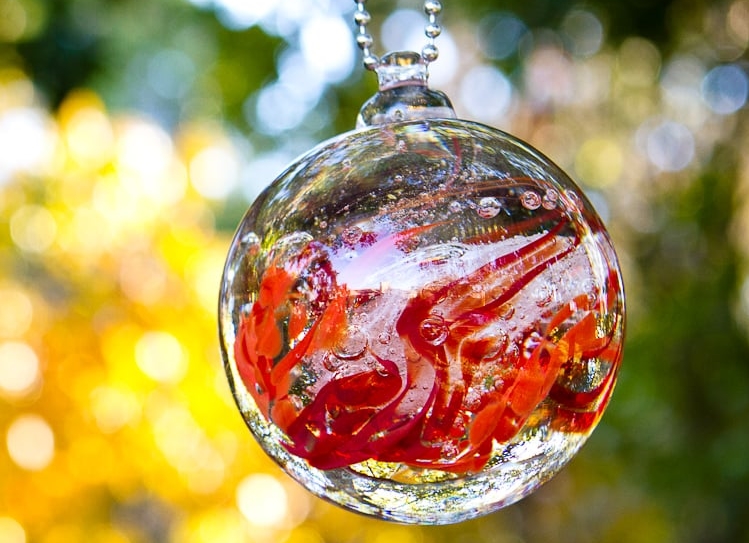
Another beautiful and creative way to commemorate the life of a loved one.
Using some of the cremains and the specialized skill of an artist, a glass or silver memorial is created.
Cremation glass art is a particularly popular option for creating paperweights, vases, orbs, and many other memorials.
Cremation Diamonds

Did you know that you can turn ashes into diamonds? These diamonds have become a very popular method for memorializing a loved one.
Pet Memorials
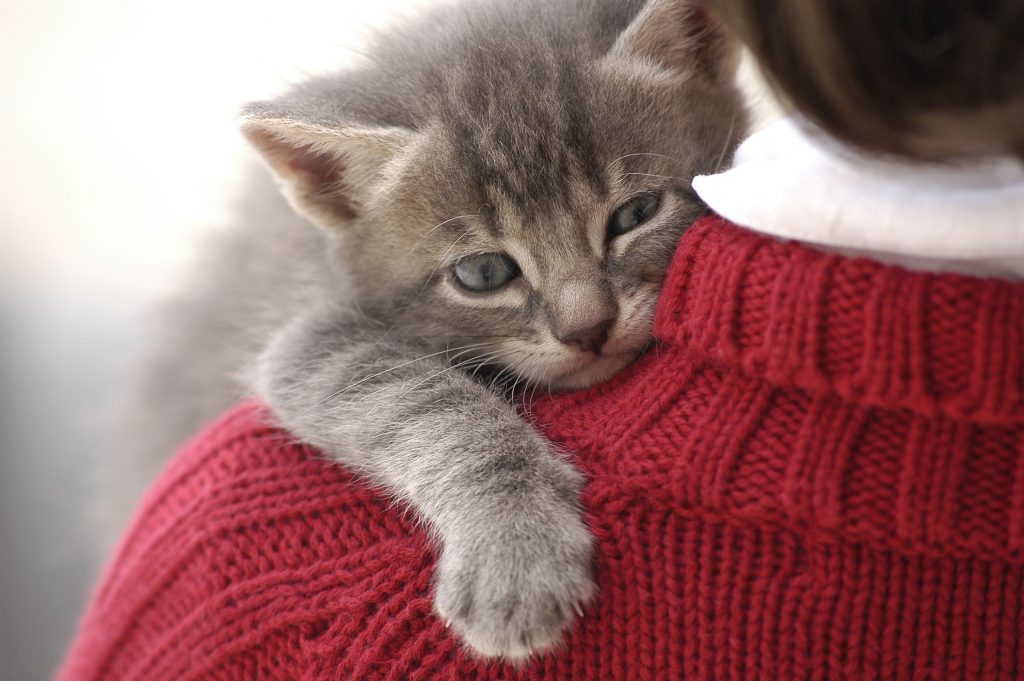
Just like with human remains, you probably will want to do something with the remains of your pet. If you need some information about cremating a pet, be sure to check out our dog cremation and cat cremation guides.
Ideas for dogs
For those looking for some inspiration on what to do, read our recent article about dog memorial ideas. You will be sure to find something that tickles your fancy.
If you’re looking for something small to put around the house, we would recommend a cremation urn for dogs.
A dog headstone is also a wonderful way to always remember your little friend.
Cat memorials
Some of our guides above for dogs can most certainly be used for cats as well. But if nothing seems to be perfect, you can check out our cat urns guide.
Spreading cremains

Spreading or otherwise known as scattering the remains is one of the most common send offs.
Frequently, the main question is where you should scatter them. Below are only a few of the countless places to consider.
- If the deceased loved nature, you might scatter their remains in one of their favorite patches of woods, a snow-capped mountain, a special nature trail, or any place that gave them peace would be perfect.
- If they loved the open waters, you might consider scattering at sea.
- Perhaps the departed loved to grow plants, therefore, scattering their ashes in a lovely garden that they grew themselves, might make them especially happy.
- Maybe they were skydivers, loved to ride in hot air balloons, or just enjoyed flying, then scattering the remains from an airplane could be the ultimate idea.
Remember that some places may forbid scattering or you might have to obtain special permission. Ask the local authorities in advance.
Transporting cremated remains
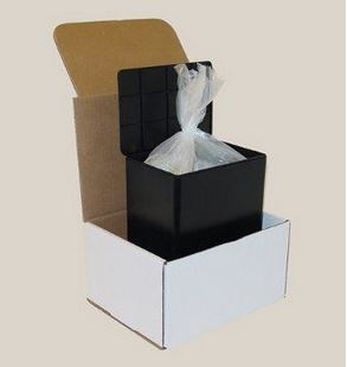
It’s not uncommon to transport the ashes across the country or internationally.
While it’s not extremely difficult, there is certain paperwork and other procedures that you will need to arrange.
Domestic Shipment
The only agency authorized to ship ashes is the United States Postal Service (USPS). There are some guidelines to follow:
It must be shipped by Priority Mail Express.
It has to be packaged in inner and outer sift-proof containers with ample padding so that the contents do not move around.
The addressee’s and the sender’s name and address much be included inside the box in case of damage to the outer label.
In addition, you should place a label with the identity of the contents on the outside of the box. The postal service has these available.
The postal service also has all the instructions on their website or you can download them at their publication #139.
International Shipment
The US Postal Service also ships internationally, unless the country to which you’ll be shipping prohibits receiving remains.
Be sure to check in advance.
It should be packaged the same as with domestic, shipped First-Class Package International services, and use Registered Mail service.
The paperwork is also the same as with domestic but, you’ll need to complete a customs declaration form as well.
Air Transport
Check the particular airline you will use for any specific policies regarding the transport of ashes as carry-on or as cargo. Some airlines require advance notice and may require documents such as a death certificate.
If traveling internationally, you might need export paperwork from your embassy. A funeral home or crematory should be able to provide you with a Non-Contraband Affidavit if it’s required.
When using air transport, you must use packaging that can be x-rayed.



My husbands ashes were placed in a casket, inside a metal container six years ago in an agreed cemetery.. At that time I was happy that they were there. However I intend moving away and would very much like to ‘take him with me’. Is this possible, provided the casket is still intact, and are there formalities attached to doing this eg permissions other than family members of course, who are support of my desire to exhume the ashes. S HTaylor
Yes. But you’d need to contact the cemetery and funeral home to have him disinterred.
But why are one persons cremains a lighter color than anothers? Is it the body or the cremation process that causes one to be more white and another persons to be more dark grey?
Thanks 🙂
My parent’s ashes were different in color also. Moms wer white and Dads were black. Both were Caucasian. I was told that it was the difference of the oven temperature. My husband’s ashes are grey and white and as hard as a brick. I wouldn’t be able to scatter them if I tried. I have no idea why this happened. If anyone might know why this happened I would truly like to know.
I inspect them most days at work for travellers and I just have never seen any ashes that are white, yet my brothers ashes are white and still I wondered.
Hello! I am not a professional but to my knowledge and experience, moisture may have gotten into the vessel. A friend of mine tried to scatter her moms ashes and they were hard as well. She ended up using her mothers rolling pin to gently break them apart. (Her mom loved baking, so I think she would have gotten a laugh out of it.)
If a person dies in hospital at USA how many days will it take delivery of body by relatives & how many days will take cremation & get ash.
Never
I’m glad you mentioned that it’s not hard to take cremated remains out of the country, but you will have to fill out some paperwork first. My husband’s aunt recently passed away and wanted to have her ashes scattered somewhere special to her, which happens to be in France. I’m glad I read your article because I hadn’t really thought about the required procedures for transporting cremated remains.
I’m a licensed funeral director/embalmer. Have been for 18 years. Have cremated hundreds of people. NEVER have I experienced the cremated remains weighing 5 lbs. Usually around 2-3 pounds, if that much.
The volume of cremated remains varies with the temperature of the crematory. It is possible that there be very little cremains, next to nothing. In most instances the volume is about that which would fill a cigar box.
Since all health hazard is eliminated with the cremation process there is not much regulation as to what can and can not be done with the ashes. That does, however, vary from state to state. I don’t know of a state that has regulations regarding the transportation of cremated remains. I have shipped many of them by way of US Postal Service to cemeteries or funeral homes in other states. I remember one time a man wanted his ashed to be spread on his favorite golf course. No law prohibited it, but the golf course was opposed to it. It happened anyhow, but the golf course was not informed. No, I didn’t do it, his family did. If you are near the Gulf or an ocean, there are flying services that will distribute the ashes over the ocean. Cost for that is pretty steep, but it is available if that is the desire.
Some cemeteries have a section that has available little grave spaces, usually about a square foot, that are for the placement of cremated remains. Appropriately sized head stones/grave markers are available for use there.
I have buried cremated remains in the casket of a person who didn’t want to be cremated.
The crematory will dispose of the ashes if the family of the deceased doesn’t want them back.
The length of time between death and when the cremation takes place is determined by the state in which the death occurs. In Florida it is 48 hours minimum. That was initiated to give 48 hours for anyone to let it be known if they suspect a homicide. The body does not have to be embalmed, in Florida, but it must be refrigerated for the 48 hour time period.
Any other questions, call your local funeral director and ask. That is what we do. Better than to know for sure than to let your mind wander.
When my dad was cremated, I recieved the bigger black box (pictured above), approximately 2/3 full, & it was about the weight of a bag of sugar. That’s what was left, even after 4 small urns, & a small baggie for tattoos! I would say he was a big guy, but by the time he passed, he didnt have legs! So you confused me on the amount of cremains there may be. & as far as transporting them.. Put them in your tattoo (by a sterile trained individual!), then they’re ALWAYS with you
My son died two years ago, at 41 years of age. He was 6’4″ tall and had a large frame (wide shoulders and ribcage, big head, wide wrists, large hands, knees and feet). His cremains definitely weighed over 5 lbs. My grandmother died at age 84, and she was large boned, and 6′ tall most of her adult life. When she lost height later on, it was due to kyphosis. Her cremains weighed over 5 lbs. I was very surprised to see that in 18 years you haven’t seen anything close to this quantity. Perhaps it is due to the location in which you practice? Maybe the location results in a client profile that has a tendency to produce smaller quantities of cremains due to an increased percentage of elderly residents, therefore a higher incidence in osteoporosis, which I assume reduces the amount of bone left after the cremation. Or is it possible that your process is different to ours in Canada, and actually vaporizes some bone that our cremation process leaves behind?
I was thinking the same thing, about the size of box and amount of ashes of my father. He was a fairly heavy guy, with heart problems… and his remains were about 3x more than my small mother. His cremains weight was probly heavier than the 5lb sugar bag, whereas my mother, who passed weighing around 90lbs (thanks to cancer), was still about 5lbs, maybe 4. They resided in Virginia when they passed in 2019 – so no heat, and before my mom’s cancer, they had healthy diets with lots of calcium… So really, who knows – the human body is a mystery.
I’ve just received the ashes of my father. They weighed 3.7kg in total (8.1 lbs). He was average build and about 5’9″ tall. I thought it was quite a lot. I wasn’t expecting that much.
Thank you for your input. If the remains are heavier than even the 5 lbs was the cremation done properly? I recently lost my husband to Covid and I just have a sense from the day I picked up the ashes that something was not right.
What is the cat litter substance added to the remains ?
My sister in law buried my mother and father in laws ashes in her back yard she recently is planning in saleing the house and i dug them up they are soaking wet how would you dry them to put them into better urns
I too have this question. We took my father’s brass urn out of the ground and there was water inside even though it took an angle grinder to get it open. How can I dry them out to split between the siblings and how did water get in??
My relative’s ashes included big pieces that looked like banged up silver colored metal. Is that his bone? Or a tooth filing maybe?
I buried my cremated 19 year old cat in a plastic (small coffin like) sealed container (that the pet cremation service supplied), in the ground 14 years ago. I was not able to afford an urn at the time. I am selling my house and went to dig up the container with his ashes and cannot find the container where I buried it. I know no one has disturbed or moved the plastic container. I called the cremation service I used 14 years ago to ask if it could have decomposed over time and they stated that no, it should still be there. We have dug and looked and cannot find his plastic contain with his ashes. I am fine if the possibility that the container and ashes decomposed, but want to make sure before I move. Please advise if you think this was possible as we cannot locate any of the plastic contain remains with ashes. Thank you
Depending on the plastic, yes it CAN decompose over time. The worms and other critters get into it, the ground moves due to rain / frost etc, it gets dispersed naturally.
What could cause a rainbow when the ashes are scattered
Love
My daughter’s dog was cremated. The ashes really looked like ashes, not aquarium gravel. They were pure white and very ‘floaty’. What makes them so different from human ashes?
I’d like to know this too. I’ve had 3 dogs cremated over the years & my last dog’s cremains couldn’t be more different. I just got my 14+ years-old Mya’s cremains back today & they are a darkish gray & they look like ashes… no small bone fragments in them at all as with my other dogs, which were lighter colored as well. I went through a different vet this time, but this is the 2nd dog I had cremated in this state.
Thank you.
I am ready to bury my mom with my father she was cremated I have her in a urn but they informed me that I have to have her in case in order to her be buried in the ground how much approximately is that
My father was cremated 20 years ago. My mother is still living but her and my fathers plan was to bury her with my fathers ashes to be scattered over her before she is buried is this possible to do in the state of Florida? what would I need to do to make this happen if it is possible.
Camille: I would simply call your nearest Neptune Society office and ask them. They should have the complete info about cremation rules in your state.
Can you put ashes in a bonfire?
I’m sure you could but they probably wouldn’t burn up much. You’d want to make sure it’s a pretty big fire or the ashes (which are pretty much like sand) would snuff out the fire, I’d assume.
Tooth filling sounds legitimate, though according to the article above they are supposed to remove such things with a magnet right after burning. But I’m sure it’s not unheard of to miss one sometimes.
Magnets only attract steel/iron. Amalgam in tooth fillings is composed of liquid (elemental) mercury and a powdered alloy composed of silver, tin, and copper. We visually inspect all cremains to remove all foreign metals, dental metalwork, screws/ plates/joints from bone injuries, etc. Even metal snaps from hospital gowns.
Color of cremains varies between bone white and grey. Usually they are darker when there is additional non-human items cremated along with the body. Additionally, the cremains will be darker if bodies are not efficiently and fully cremated.
What happens with the removed metals?
Does the family get them back?
I picked my father up yesterday and it could not have weighed more than 2 pounds. He was skin and bone by the time he passed. He looks like pinkish white sand. My dog’s cremains are granular and various shades of off white with some turquoise granules which is some mineral in the body while my other dog’s has bone fragments in the gray ashes. Each one is quite different.
Is it true that cremains weigh what the deceased weighed at birth? I have experienced 4 cremations; men, women, middle aged, old. All ashes weighed the person’s birth weight! That’s too many to be coincidence. My husband’s cremains weighed 8lbs. 6oz.
Wow, that really is an intriguing coincidence … I remember my father saying he was a pretty heavy baby, even for the time (1948), and his cremains were more than 5lbs for sure … I haven’t weighed them, but that would be interesting. With my mother, who was a tiny baby – she passed weighing about 90lbs, and her remains are maybe 5lbs. But yeah, would be interesting to see if the weight was about the same… Human bodies are so strange.
funny you say that Diane. My husband’s ashes weigh exactly the same as when he was born – 7lb 12 oz. I checked it several times because I thought I was going crazy… thank you for confirming or relating this. I am having my husband’s ashes/cremains placed in a reborn doll that was made to look like him as a baby… very comforting to me.
My question is what happens to the cremains once air hits them? Can I share them with family at different times or will they harden once the bag is opened?
Also, I have kept them for 3 years unopened. Is it possible they have hardened? If so what can I do?
My sister took my mom‘s ashes and decided to have her cremated which is what mom wanted to do but after the cremation my sister wouldn’t let me have any ashes and I don’t see how that’s quite fair when we’re both have medical power of attorney and I had to sign papers before the funeral home would do the cremation and they will do used to give me any ashes because my sister said so that does not make no sense to me and I have had a hard time with my mothers death because of this not only did she do that my sister took my mother and moved her to the beach where she lives and all her stuff out of her apartment and some of the stuff is mine I didn’t get anything at my mothers my sister took it all and my mother died three days later after she got there what can I do about this I think it was wrong for the funeral home to tell me they could send me some ashes and then turn around and not let me have any that is so not people like sun or something I don’t know it is really bugged me How funeral home could do that in someone’s ashes and not give the other sibling some ashes
We have decided to cremate my diseased grandmother mostly because she contracted COVID. Thanks for mentioning here how cremated remains have a designated place in a cemetery. We’re looking into all these possibilities and I wonder if memorial buildings can also be an option.
I decided to leave my dad’s ashes alone and in the black box that they were given to me from the funeral home. I am keeping the box with his remains in the bottom of his favorite thing, his grand grandfather’s clock. Everytime it chimes I think of him. He loved that clock so much. I loved him so much.. Brahms O’Daniel
It probably depends on the colour of the coffin too
Useful information and an interesting video — but inappropriate, irreverent “ew, yuck” intro to the video. I want the facts about how my loved ones were cremated, not someone’s revulsion about the process.